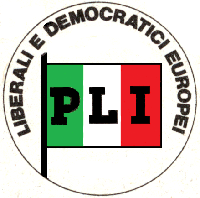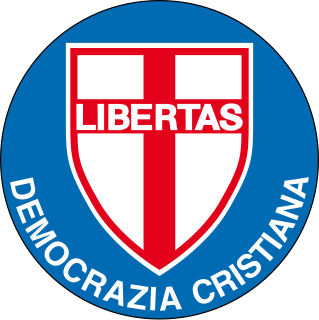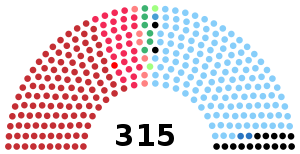
Francesco Cossiga was an Italian politician, member of the Christian Democracy. He served as the 42nd Prime Minister of Italy from 1979 to 1980 and the 8th President of Italy from 1985 to 1992. Cossiga is widely considered one of the most prominent and influential politicians of the so-called First Republic. He has been often described as a strongman and accused of being an "iron minister", who brutally repressed the public protests.
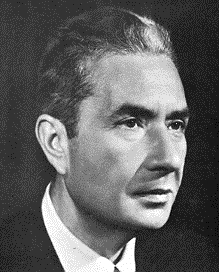
Aldo Romeo Luigi Moro was an Italian statesman and a prominent member of the Christian Democracy party. He served as 38th Prime Minister of Italy, from 1963 to 1968, and then from 1974 to 1976. He was one of Italy's longest-serving post-war Prime Ministers, holding power for a combined total of more than six years. Due to his accommodation with the Communist leader Enrico Berlinguer, known as the Historic Compromise, Moro is widely considered one of the most prominent fathers of the Italian centre-left and one of the greatest and most popular leaders in the history of the Italian Republic. Moro was considered an intellectual and a patient mediator, especially in the internal life of his party. He was kidnapped on 16 March 1978 by the Red Brigades and killed after 55 days of captivity.

Benedetto "Bettino" Craxi was an Italian politician, leader of the Italian Socialist Party from 1976 to 1993 and Prime Minister of Italy from 1983 to 1987. He was the first member of the PSI to hold the office and the third Prime Minister from a socialist party. He led the third-longest government in the Italian Republic and he is considered one of the most powerful and prominent politicians of the so-called First Republic.
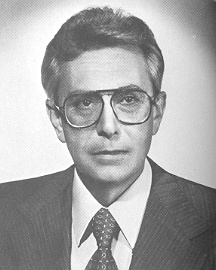
Arnaldo Forlani, is an Italian politician who served as the 43rd Prime Minister of Italy from 18 October 1980 to 28 June 1981. He also held the office of Deputy Prime Minister, Minister of Foreign Affairs and Minister of Defence.

Amintore Fanfani was an Italian politician and the Prime Minister of Italy for five separate runs. He was one of the best-known Italian politicians after the Second World War, and a historical figure of the left-wing section of the Christian Democracy party; he is also considered to have been one of the founders of the Italian centre-left.

Giulio Andreotti was an Italian politician and statesman who served as the 41st Prime Minister of Italy and leader of the Christian Democracy party; he was the sixth longest-serving Prime Minister since the Italian Unification and the second longest-serving post-war Prime Minister, after Silvio Berlusconi. Andreotti is widely considered the most powerful and prominent politician of the so-called First Republic.
The Historic Compromise, called also Third Phase or Democratic Alternative, was an Italian historical political alliance and accommodation between the Christian Democrats (DC) and the Italian Communist Party (PCI) in the 1970s.

General elections were held in Italy on Sunday 18 April 1948 to elect the First Republican Parliament. They were heavily influenced by the Cold War confrontation between the Soviet Union and the United States, and are now best known for the covert political warfare waged by the US State Department and Central Intelligence Agency on behalf of the Christian Democratic Party (DC).
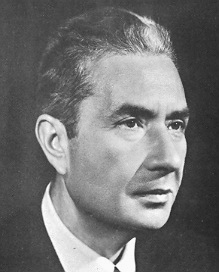
General elections were held in Italy on 28 April 1963, to select the Fourth Republican Parliament. It was the first election with a fixed number of MPs to be elected, as decided by the second Constitutional Reform in February 1963. It was also the first election which saw the Secretary of Christian Democracy to refuse the office of Prime Minister after the vote, at least for six months, preferring to provisionally maintain his more influent post at the head of the party: this fact confirmed the transformation of Italian political system into a particracy, the secretaries of the parties having become more powerful than the Parliament and the Government.

General elections were held in Italy on 19 May 1968 to select the Fifth Republican Parliament. Democrazia Cristiana (DC) remained stable around 38% of the votes. They were marked by a victory of the Communist Party (PCI) passing from 25% of 1963 to c. 30% at the Senate, where it presented jointly with the new Italian Socialist Party of Proletarian Unity (PSIUP), which included members of Socialist Party (PSI) which disagreed the latter's alliance with DC. PSIUP gained c. 4.5% at the Chamber. The Socialist Party and the Democratic Socialist Party (PSDI) presented together as the Unified PSI–PSDI, but gained c. 15%, far less than the sum of what the two parties had obtained separately in 1963.

General elections were held in Italy on 7 May 1972, to select the Sixth Republican Parliament. Democrazia Cristiana (DC) remained stable with around 38% of the votes, as did the Communist Party (PCI) which obtained the same 27% it had in 1968. The Socialist Party (PSI) continued in its decline, reducing to less than 10%. The most important growth was that of the post-fascist Italian Social Movement, who nearly doubled its votes from 4.5% to about 9%, after its leader Giorgio Almirante launched the formula of the National Right, proposing his party as the sole group of the Italian right wing. After a dismaying result of less than 2%, against the 4.5% of 1968, the Italian Socialist Party of Proletarian Unity was disbanded; a majority of its members joined the PCI.

General elections were held in Italy on 3 June 1979, to select the Eighth Republican Parliament. This election was called just a week before the European vote: the failure to hold the two elections at the same time caused much criticism for wasting public money.

General elections were held in Italy on 26 June 1983, to select the Ninth Republican Parliament. The Pentaparty formula, the governative alliance between five centrist parties, caused unexpected problems to Christian Democracy. The alliance was fixed and universal, extended both to the national government and to the local administrations. Considering that the election result did not longer depend by the strength of the DC, but by the strength of the entire Pentapartito, centrist electors began to look at the Christian Democratic vote as not necessary to prevent a Communist success. More, voting for one of the four minor parties of the alliance was seen as a form of moderate protest against the government without giving advantages to the PCI. Other minor effects of this election were a reduction of the referendarian Radical Party and the appearance of some regional forces.

General elections were held in Italy on 14 June 1987, to select the Tenth Republican Parliament. This election marked the final inversion of the trend of the entire republican history of Italy: for the first time, the distance between the Christian Democrats and the Communists grew significantly instead of decreasing, and this fact was seen as the result of the deindustrialization of the country. The growth of the service sector of the economy, and the leadership of former PM Bettino Craxi, gave instead a new strength to the Socialists. A remarkable novelty was the rise of the new Green Lists, while a new party obtained its first two parliamentary seats: the Northern League.

The second elections for the European Parliament in Italy were held on 17 June 1984.

The Italian regional elections of 1975 were held on June 15. The fifteen ordinary regions, created in 1970, elected their second assemblies. Following the 1971 census, Piedmont, Veneto and Latium had ten more seats each.

The Italian regional elections of 1985 were held on May 12. The fifteen ordinary regions, created in 1970, elected their fourth assemblies.
The Pentapartito, commonly shortened to CAF refers to the coalition government of five Italian political parties that formed between June 1981 and April 1991. The coalition comprised the Christian Democracy (DC) party and four secular parties: the Italian Socialist Party (PSI), Italian Democratic Socialist Party (PSDI), Italian Liberal Party (PLI) and Italian Republican Party (PRI).
The centre-left coalition is a political alliance of political parties in Italy active, under several forms and names, since 1995 when The Olive Tree was formed under the leadership of Romano Prodi. The centre-left coalition ruled the country for more than twelve years between 1996 and 2018.



